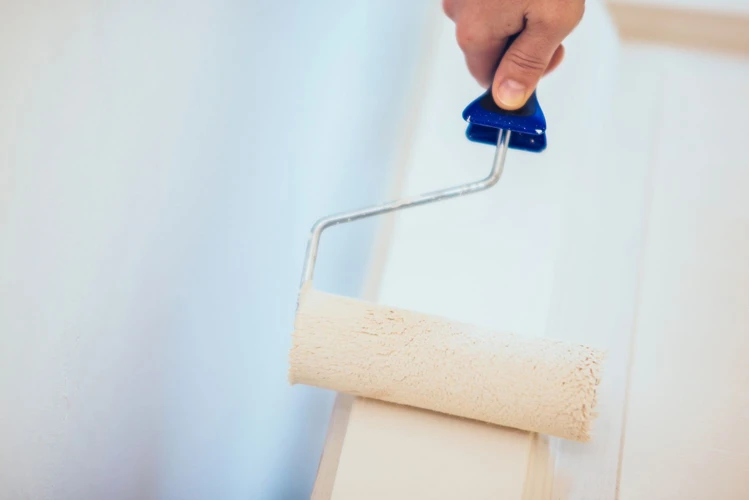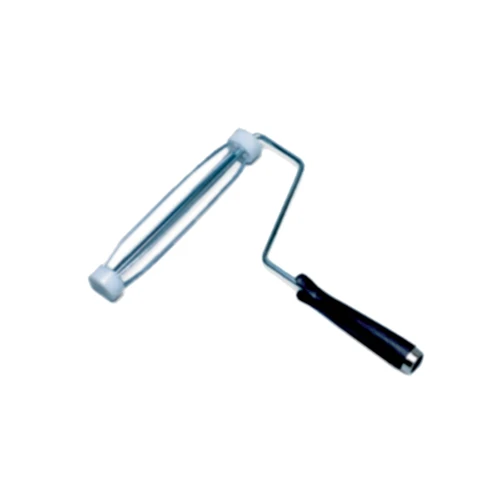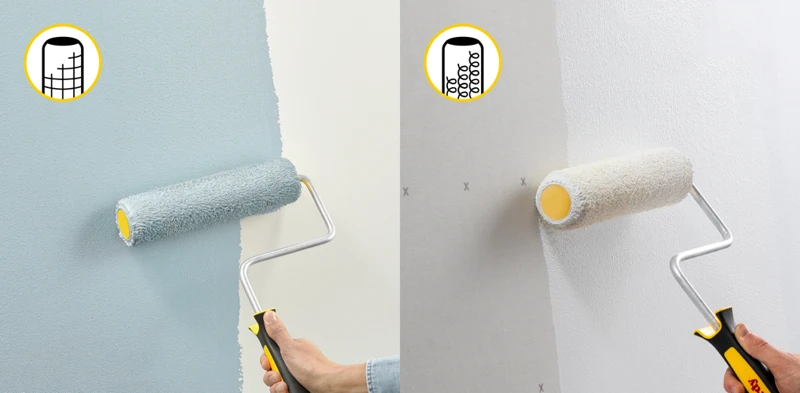When embarking on a painting project, selecting the right tools is just as crucial as choosing the perfect paint color. One essential tool is the paint roller frame, which serves as the backbone for efficient and even paint application. This post will guide you through the process of choosing a roller frame that will not only make your painting project easier but also help achieve that professional-looking finish.
Understanding the Types of Paint Roller Frames
Materials and Durability of Roller Frames
The materials and construction of a paint roller frame are pivotal in determining its longevity and performance. Frames typically come in a variety of materials, each with distinct benefits. Ensuring that you select a durable paint roller frame means fewer replacements and consistent results throughout your painting endeavors.
Metal vs Plastic Frame Options
Metal frames are known for their sturdiness and are less likely to bend or break under pressure, making them a reliable choice for heavy-duty painting tasks. On the other hand, plastic frames are lightweight and can be more comfortable to use for extended periods but may not stand up to the rigors of a demanding job.
Roller Frame Features for a Smooth Finish
Fiber-Covered vs Urethane Foam-Covered Roller Covers
The type of roller cover you choose should complement your roller frame for smooth finish aspirations. Fiber-covered rollers are adept at holding a significant amount of paint, which is ideal for textured surfaces, while urethane foam-covered rollers are perfect for smooth walls where a fine finish is required.
Nap Thickness Recommendations for Different Surfaces
Nap thickness is a critical aspect of a painting roller frame guide, as it determines how much paint the roller can hold and the texture it will leave on the wall. A rule of thumb is that the smoother the surface, the shorter the nap you should use.
How to Pick a Paint Roller Frame
Paint Roller Frame Selection Based on Wall Texture
When contemplating how to pick a paint roller frame, consider the texture of the walls you’ll be painting. A frame that accommodates the right nap thickness for your specific surface will ensure that paint is applied evenly and effectively.
Choosing a Durable Paint Roller Frame
A durable paint roller frame is an investment that pays off in the long run. It’s essential to choose a frame that can withstand the pressure of multiple painting jobs and hold up against the weight of different roller covers saturated with paint.
Best Roller Frame for Painting: Size and Style
Common Sizes and NAP Thickness
The best roller frame for painting comes in various sizes and nap thicknesses to suit diverse project requirements. From small touch-up rollers to large frames for painting expansive areas, there’s a size that’s just right for your task at hand.
Roller Width and Its Impact on Painting
Roller width also greatly influences the painting process. Wider rollers cover more area with each stroke, leading to faster completion of the job, while narrower rollers provide more precision and control, especially in tighter spaces.
Painting Roller Frame Guide: Nap Thickness and Application
3-5mm NAP for Fine Finishes
For those seeking a fine finish on smooth walls, a 3-5mm nap is ideal. This thickness is perfect for glossy paints and surfaces that require a polished look.
7-9mm NAP for Medium Textures
A 7-9mm nap roller is versatile and can handle a variety of paint types, making it suitable for medium-textured surfaces. It strikes a balance between paint capacity and surface application.
10-15mm NAP for Rough Surfaces
Rough surfaces require a 10-15mm nap to ensure that the paint reaches into crevices and pores for uniform coverage. This nap can handle more viscous paints and provides excellent coverage on surfaces like brick or stucco.
18-26mm NAP for Very Rough Textures
For very rough textures, such as those found on some exterior walls, an 18-26mm nap will be your best bet. The long fibers can grip and distribute paint over uneven surfaces, ensuring thorough coverage.
How to Achieve the Best Results with Your Roller Frame
Techniques for a Smooth and Even Coat
Achieving a smooth and even coat requires the right technique as much as the right roller frame features. Always apply paint in a ‘W’ or ‘M’ pattern and maintain a wet edge to avoid lap marks and ensure a uniform finish.
Roller Frame Maintenance and Cleaning Tips
To prolong the life of your paint roller frame, proper maintenance and cleaning are essential. Remove excess paint after use and wash thoroughly with soap and water for water-based paints or mineral spirits for oil-based paints. Dry completely before storing to prevent rust or damage.
When embarking on a painting project, selecting the appropriate tools is crucial for achieving a professional finish. Alongside the essential roller frame, understanding the types of sandpaper, roller covers, and paintbrushes that work best for your project can make all the difference. For more tips on how to choose the right tools, check out our guides on choosing the right sandpaper for painting, selecting the ideal roller cover, and finding the perfect paintbrush for your paint project. These resources are designed to help you get the job done with precision and ease.
Conclusion: Final Thoughts on Roller Frame Selection
In summary, the secret to a successful painting project lies in the meticulous selection and use of your painting tools. A well-chosen paint roller frame can make all the difference in ease of application, finish quality, and the overall enjoyment of your painting project. Remember to consider the types of paint roller frames available, their features, and the specific needs of your project when making your selection.


